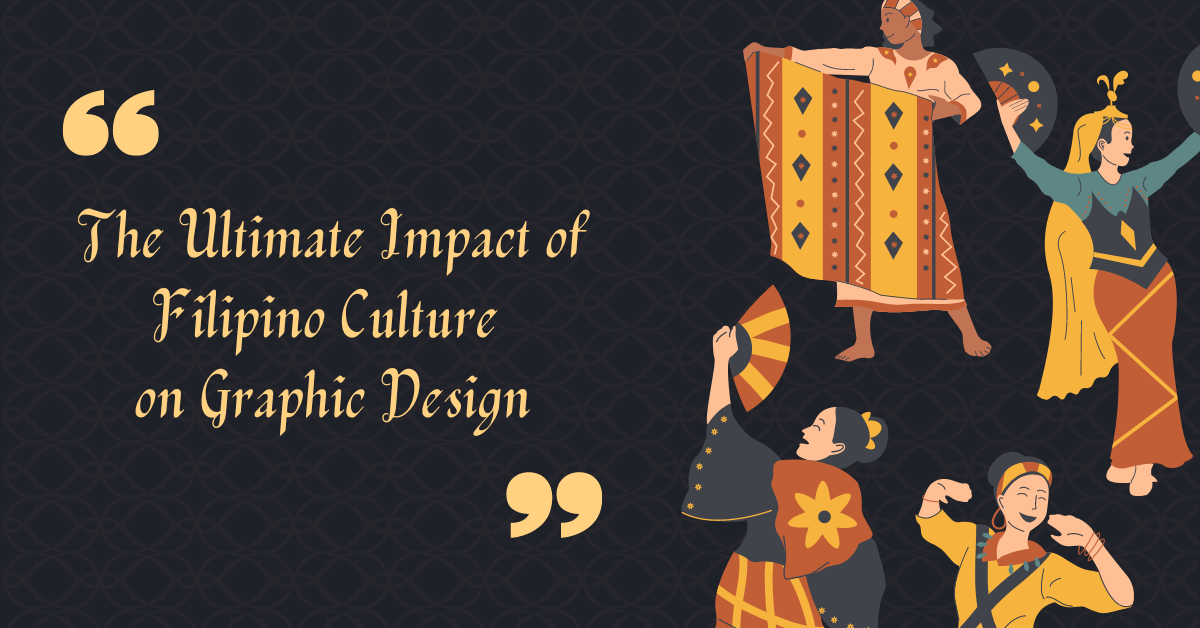The Philippines is a country rich in culture and heritage, with a history spanning over 7,000 islands. The country’s diverse and colorful culture has had a significant impact on the design industry, particularly in graphic design. In this blog post, we’ll explore the impact of Filipino culture on graphic design and how it has shaped the industry today.
1. Use of vibrant colors
Filipino culture is known for its vibrant and colorful nature, which is evident in its festivals, art, and cuisine. This has had a significant impact on graphic design, as designers have incorporated bright and bold colors into their work to capture the essence of Filipino culture. The use of vibrant colors has become a trademark of Filipino graphic design and is often used to express joy, energy, and enthusiasm.
2. Traditional Filipino patterns and motifs
Filipino culture is also known for its rich tapestry of patterns and motifs, which have been passed down from generation to generation. These traditional patterns and motifs have found their way into graphic design, with designers incorporating them into their work to add a touch of authenticity and local flavor. From the intricate patterns of the T’nalak weavers to the colorful banig mats of the Visayas, these traditional patterns and motifs have become a staple in Filipino graphic design.
3. Typography and calligraphy
The Philippines has a rich tradition of calligraphy, with the art form dating back to the pre-colonial era. This has had a significant impact on typography in graphic design, as designers have incorporated calligraphy and hand-lettering into their work to add a personal touch and reflect the country’s artistic heritage. Filipino calligraphy has a distinct style, with flowing lines and curves that add a touch of elegance and sophistication to any design. You may learn more here.
4. Storytelling
Filipino culture is known for its love of storytelling, with myths, legends, and folktales passed down from generation to generation. This love of storytelling has had a significant impact on graphic design, as designers have incorporated storytelling techniques into their work to create a more engaging and memorable experience for viewers. By using visual storytelling techniques, designers can create a connection between the audience and the brand, helping to build a strong and lasting relationship.
5. Eco-Friendly Design
Filipino culture has a strong emphasis on community and the environment, which has led to a rise in eco-friendly design practices. Filipino graphic designers have been at the forefront of this trend, incorporating sustainable design principles into their work to reduce their carbon footprint and promote environmental awareness. From using recycled materials to designing with minimalism in mind, eco-friendly design has become an essential part of Filipino graphic design.
6. Modernizing Tradition
Filipino culture is steeped in tradition, but modern designers have found ways to incorporate these traditional elements into modern graphic design. This has led to a unique blend of old and new, with designers taking traditional motifs and patterns and giving them a modern twist. This approach has helped to keep Filipino culture alive and relevant, while also showcasing the country’s artistic heritage to the world.
Conclusion
In conclusion, the impact of Filipino culture on graphic design is undeniable. From the use of vibrant colors to the incorporation of traditional patterns and motifs, Filipino culture has left an indelible mark on the design industry. By embracing the country’s rich heritage and cultural traditions, Filipino graphic designers have created a unique and vibrant style that is both authentic and modern. As the design industry continues to evolve, it’s clear that Filipino culture will continue to play a vital role in shaping the future of graphic design. Stay tuned on Artmeet fore more design inspiration that Philippines related.

